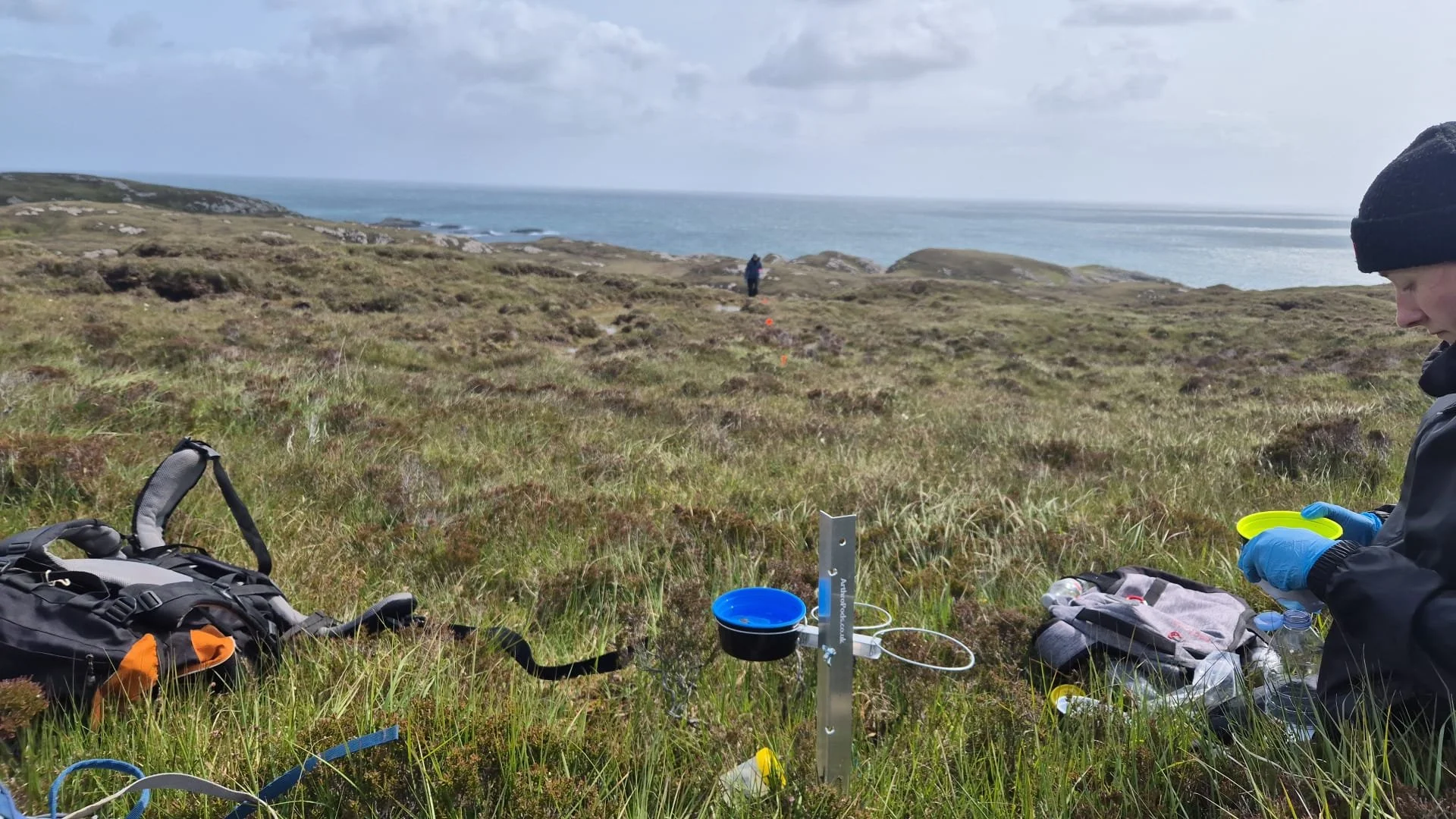Baselining Ronay Island: A closer look at our starting point
This summer marks the beginning of a long-term, carefully planned effort to understand and restore the natural environment on Ronay Island. In partnership with RePlanet, we’re working with expert ecologists to begin an extensive round of ecological surveys to capture the full picture of the island's current state.
What is a baselining survey?
A baselining survey is the ecological equivalent of taking a snapshot in time. It allows us to record, in detail, what plants, animals, insects and habitats are currently present. This initial data forms our reference point, or “baseline”, so that any future improvements can be measured against it.
The process is designed to be repeatable. By conducting the same surveys every few years, we can monitor our progress, adjust our methods, and learn what’s working. This approach not only provides scientific rigour but also strengthens our ability to design a meaningful, evidence-led strategy for restoration.
Surveying every inch: how we gather the data
Our fieldwork is comprehensive and methodical. Each survey point is documented with a standardised photo series: four ground-facing shots in the cardinal directions, followed by four horizontal views in the same directions. We also use a quadrat (a square frame placed on the ground) to take close-up images of plant life within a fixed area. All images are geolocated and uploaded to a central app, giving us a consistent and trackable dataset.
To understand the island’s insect life, we use simple but effective trapping methods. Ground invertebrates are caught using pitfall traps filled with mineral water and a few drops of washing-up liquid to break the surface tension. The same principle is used for flying insects, with the traps raised above the ground. All samples are frozen and sent for lab analysis.
What we’ve found so far
Early signs point to potential, but also to what’s missing. On the eastern cliffs, we’ve found native bluebells, which are known indicators of ancient woodland. Their presence suggests that Ronay Island may once have supported oak-dominated Atlantic temperate rainforest in these damp, sheltered areas. We’ll return to this site for more detailed soil sampling to learn more.
Birdlife has been rich and varied, with recent sightings including both golden and white-tailed eagles, short-eared owls, cuckoos, wheatears, and stonechats. Waders such as oystercatchers, greenshank, redshank, and common sandpipers have also been noted, along with ravens, kestrels, herons, mergansers, and arctic terns.
Pan Traps used to monitor flying pollinators have so far captured beetles, flies, ants, bees, sawflies, wasps, moths and grasshoppers. Pitfall Traps targeting ground-dwelling arthropods have captured beetles, true bugs, flies, ants, springtails, spiders, mites/ticks, and harvestmen.
But despite these encouraging signs, it’s clear that much of the ecological structure that should exist here is absent. Trees like willow, mountain ash and birch are missing, likely due to sustained grazing by herbivores. These tree species would provide essential habitat and food sources for insects and birds, including cuckoos and willow warblers, that are either rare or absent on the island today.
What’s next for Ronay Island?
The baselining surveys are the foundation for everything that comes next – a plan rooted in science, grounded in local conditions, and focused on returning the island to a thriving, resilient ecosystem.
Over time, our restoration strategy will likely include managing deer populations and reintroducing native tree species – not new or foreign ones, but those that would naturally grow here if given the chance. We’ve already seen evidence that these species are trying to regenerate, but they simply can’t survive the current level of grazing.
Importantly, our work on Ronay is not isolated. We’ll be able to compare our progress with similar Hebridean islands to understand what makes some sites more successful than others in terms of biodiversity recovery. This comparison will help us make better decisions for Ronay in the long run.
Further surveys planned later in the summer
The baselining survey will continue throughout the summer, giving us a thorough and accurate view of Ronay’s natural systems.
We will welcome RePlanet and their ecologists back to Ronay later in the summer to repeat the surveys and complete our baselining. We are looking to involve people from the North Uist community and our steering committee with our next round of surveys.




